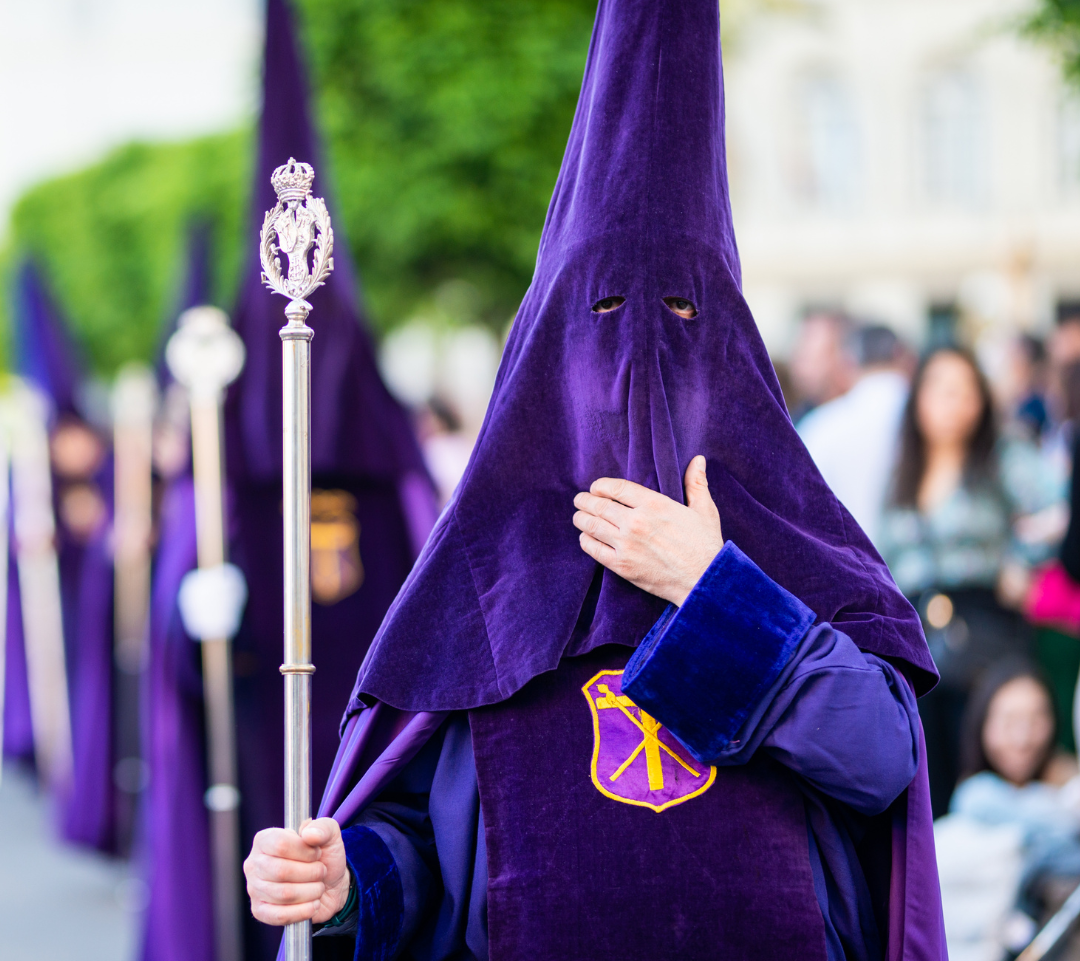6 Curious Facts about Semana Santa in Spain
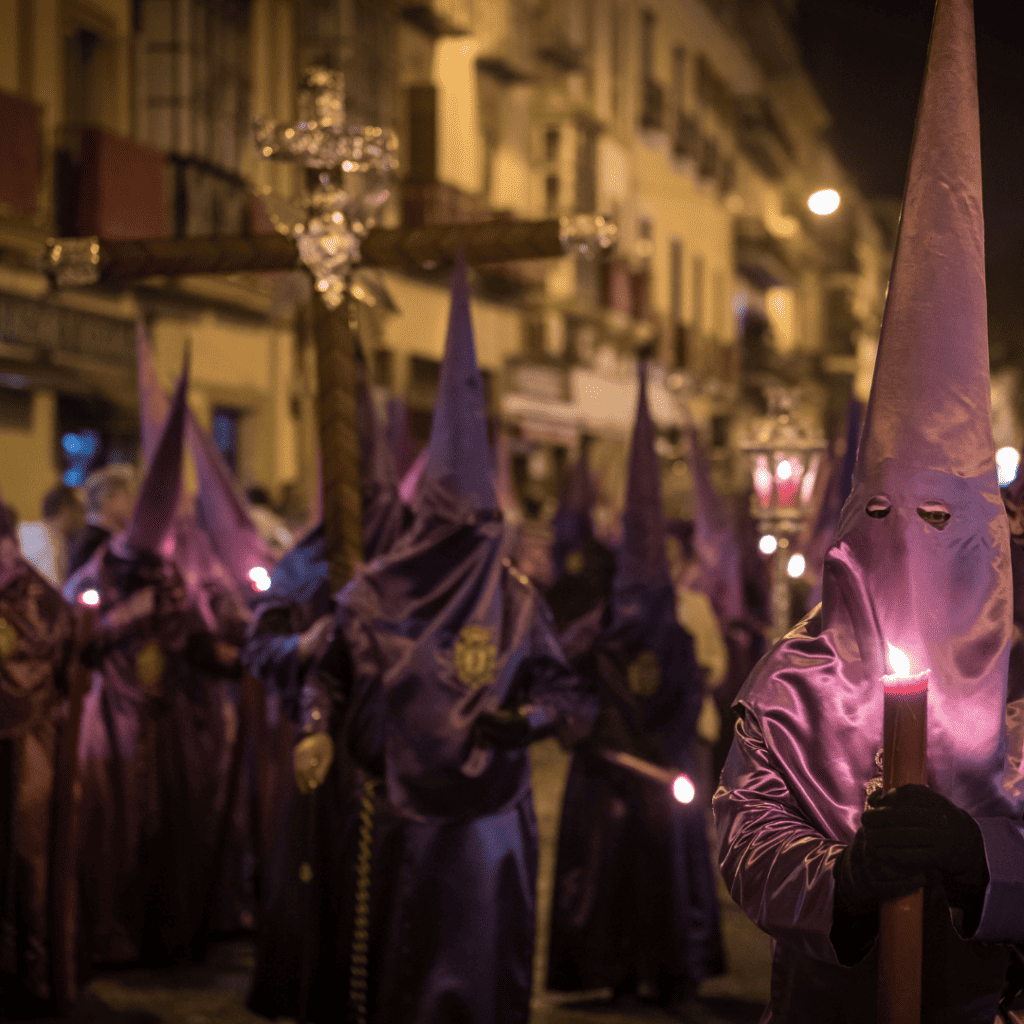
-
Save
Forty days after Ash Wednesday, Semana Santa begins in all Catholic countries. Although this is not an exclusively Spanish celebration, no one can deny that Spain is home to the most iconic traditions of these festivities, some of which attract almost three million visitors every year. Whether for religious or cultural reasons, these Catholic ceremonies and festivities do not leave those who choose to see them live indifferent.
To give you a better understanding of the Spanish Semana Santa, in this post we bring you the 6 most curious or relevant facts about this tradition.
In this post you'll find:
- 6 unique and interesting facts of the Spanish Semana Santa,
- many pictures and videos to learn more about these celebrations.
Wait a second… Have you missed our previous post about key vocabulary for Semana Santa in Spanish? Don’t worry! Just click on the link bellow and keep learning with us!
Pasos and costaleros
Surely you have seen images of Hispanic Catholic celebrations and processions, those religious parades where we display a figure or several figures representing a saint, a virgin, Jesus or some biblical scene. Well, at Semana Santa these images are called pasos because they represent an event from the last days of the life of Jesus of Nazareth, from his arrival in Jerusalem (on Palm Sunday) to his resurrection (on Easter Sunday).
Did you know that these pasos can weigh tons? Yes, the record for the heaviest one is held by La Sagrada Cena, which weighs 7 tonnes.
These large and heavy pasos are transported with the help of wheels, but most of them are carried by groups of men called costaleros. The costaleros carry the weight of the pasos on their shoulders thanks to a wooden or metal structure. It’s a hard and complicated task that requires coordination and endurance to avoid accidents.
Cofradías
If you have seen any photographs of Spanish Semana Santa, you will surely have noticed those people wearing tunics and those peculiar pointy caps with two holes for the eyes. These people are called cofrades, capuchinos or nazarenos and they are part of religious groups called cofradías. The cofradías are religious brotherhoods that take care of a paso or some religious image. They pay a fee to keep the image in good conditions, they are in charge of the flowers and restorations of that religious figure. Each one has its own colour and characteristic clothing.
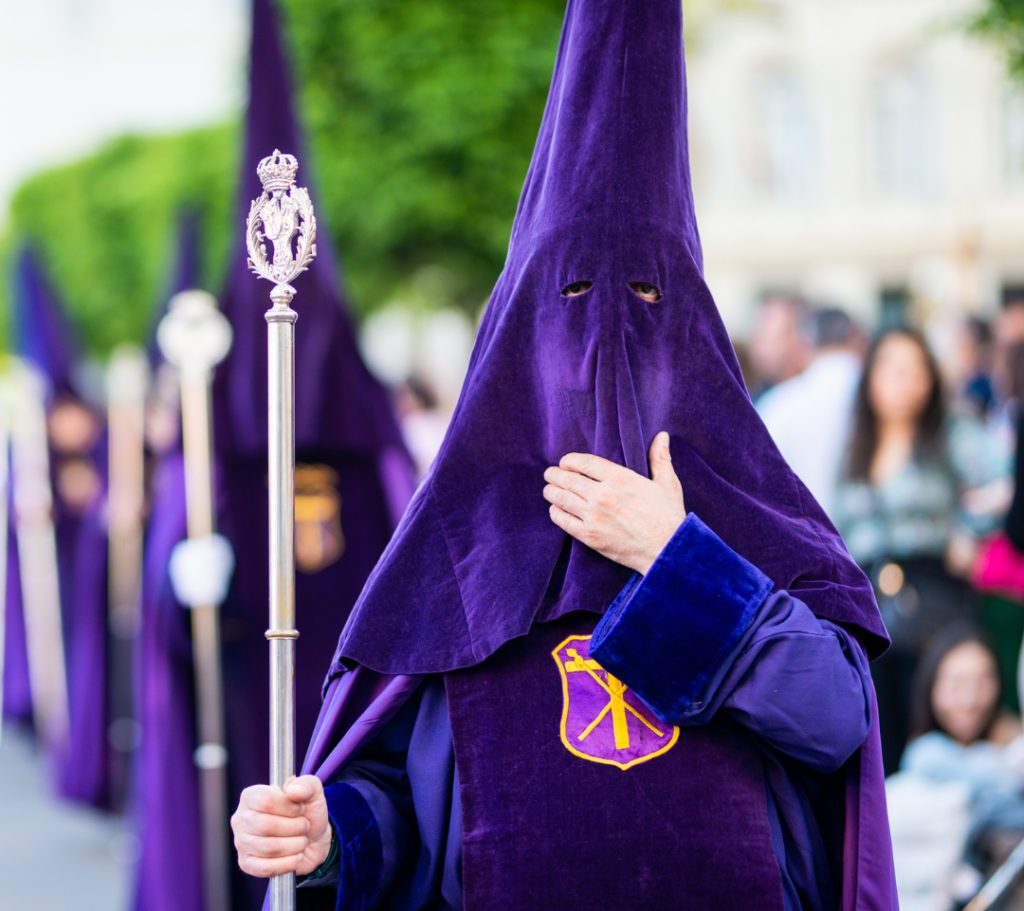
-
Save
Attention! That pointy headwear called capirote is not worn by all the cofradías, but it is the most characteristic symbol of Semana Santa. Many souvenir shops sell small figures of Nazarenes to tourists and, to avoid confusion, they have to put up signs to specify that they are not Ku Klux Klan figures, but nazarenos from Semana Santa.
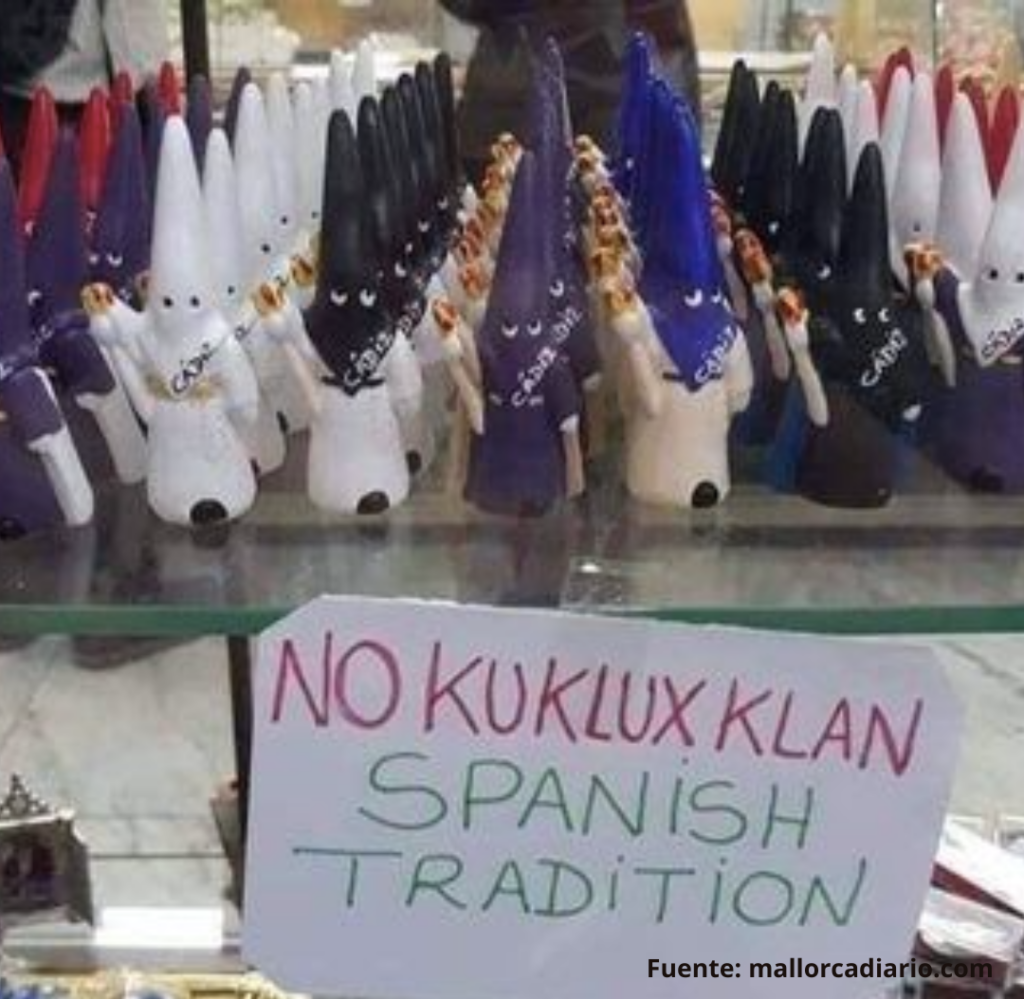
-
Save
As a last interesting fact about these groups, we can tell you that there are some cofradías in the Canary Islands formed only by women who accompany the Virgen de los Dolores in which they are dressed in mourning clothes: black clothes, black gloves, black peinetas, black mantillas and a small silver daggers on their chest.
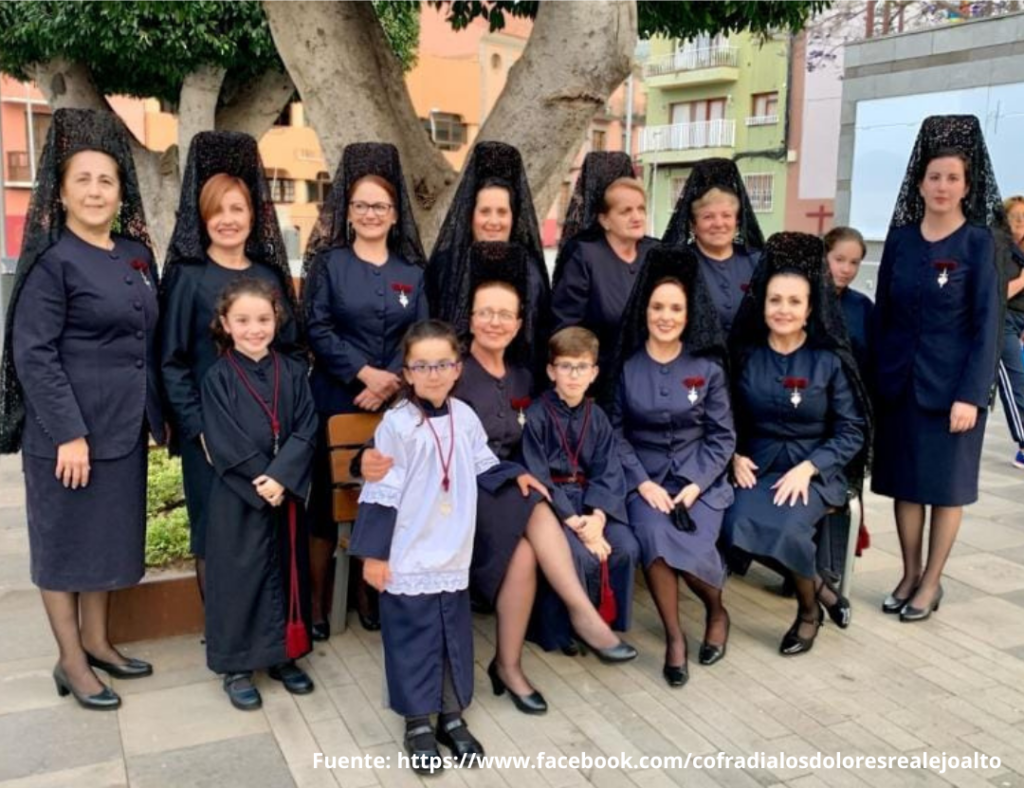
-
Save
Procesiones
From Palm Sunday to Easter Sunday there are numerous processions, some of which attract thousands of people and have become so popular and so touristic that some people rent out their balconies to tourists who want to have a privileged view. One of the most impressive processions is the procession of silence. This is a procession during the night in which there is no music and no talking. Below you can watch a TV report about the procession of silence in La Laguna, on the island of Tenerife.
Other peculiar procession that you can see is the one of El Cristo Negro de Málaga, in which the Spanish Legion parades and sings its hymn El novio de la muerte (The Groom of Death).
If you are interested in checking out some of the other peculiar traditions in the different villages of Spain, we recommend this video from the public television news in which they review some of the most striking ones.
The Passion of Christ
The Passion of Christ is the name given to the last days of the life of Jesus of Nazareth, from his arrival in Jerusalem to his death and resurrection. As well as being represented with the pasos we have talked about, it is also represented by a theatrical performance in the streets and squares of different towns and cities of Spain. These are events in which people from the town or city take part and which attract hundreds or thousands of spectators. Below you can see one of the most popular performances of the Passion in the Canary Islands, which has been held for many years in the town of Adeje, in the south of Tenerife.
Penance and religious fervour
During these processions and religious ceremonies some people decide to go a step further and punish themselves physically to demonstrate their faith, atone for their sins or to show solidarity with the suffering of Jesus in his last days. Penances range from going barefoot in a procession or barefoot and in chains, to the so-called “picaos” who whip their backs with ropes and prick themselves with glass needles to make their backs bleed. Below you can see a news report about the “empalaos” of Valverde, a tradition of a village in Cáceres.
Another reason why some people decide to do this kind of practice during Holy Week, but also during other religious celebrations, is to fulfill a promise made to a particular saint or image. A promise for Catholics is a request for something difficult to achieve (the healing of a sick person, the recovery of a loved one, etc.) and when it has been fulfilled must be paid for with something pledged in return, usually some kind of pilgrimage or physical penance.
Traditional Dishes for Semana Santa
Food is a central part of any celebration and, of course, this also includes Semana Santa. However, on these days there is a peculiarity, religious people don’t eat meat on Thursday and Friday. This makes most of the dishes suitable for vegetarians or pescatarians. There are quite a few dishes that are traditionally prepared during this week, some of them are local dishes that are not known outside that part of the country such as pa torrat with cod, garlic and beans typical from Alicante or hornazo, which in Salamanca is a savoury meat-filled preparation that used to be eaten only on Lunes de Aguas (8 days after Easter), but in Huelva it’s a traditional dessert that was prepared during Lent and today it’s also eaten during Easter.
In addition to these foods typical of specific regions of Spain, there are also dishes and sweet specialities that are eaten throughout the country during Semana Santa (Holy Week). The most popular are torrijas, patatas viudas, rosquillas and hojuelas de miel, and the famous buñuelos de bacalao (cod puffs). If you are interested in traditional Spanish food, here are some step-by-step recipe videos, so you can make them at home while practising Spanish.
Torrijas
If you ask Spaniards what the typical Semana Santa’s food is, torrijas will probably be the most popular answer. It’s a way of using leftover bread and it used to be a very popular snack for children and adults alike.
Patatas viudas
In Spanish, viuda is the name given to a woman whose husband has died, but it is also the name given to all those dishes that don’t contain meat or fish because they were invented by people who didn’t have the money to buy those ingredients. As they don’t contain meat, all these kinds of preparations are very popular during Semana Santa.
Rosquillas de Semana Santa y hojuelas con miel
In the south of the mainland, two treats are especially popular during Semana Santa. These are rosquillas and hojuelas con miel, two preparations that are only suitable for those with a sweet tooth.
Buñuelos de bacalao
Although they are of Portuguese origin, this traditional recipe became popular, according to legend, during the Christian reconquest of the city of Seville, which had been Muslim territory since the Muslim invasion that began in 711. In any case, what is clear is that, although they are eaten all year round, this is the most typical time to make them.
Final recommendation
If you want to see or learn more, here is a documentary about Semana Santa in Andalusia.
If you prefer fiction, we recommend you the Spanish film Nadie conoce a nadie. It’s a thriller from 1999 that tells the story of a young crossword puzzle designer for a local newspaper who gets involved in a series of crimes committed by a sect during Semana Santa in Seville. A film full of twists and mystery that will show you different real traditions of these festivities in one of the most famous cities for it.

-
Save
Would You like to Take Your Spanish to the Next Level?
Whether you’re a complete beginner or you’re an advanced student, with us you’ll reach the next level of Spanish quickly and easily. With 24 Levels to Spanish fluency, the next level is always close by, so you will never lose motivation.
You can choose between:
In both cases, you’ll learn Spanish using our successful 24 Level System to Spanish Fluency® and our unique Spanish teaching methods.
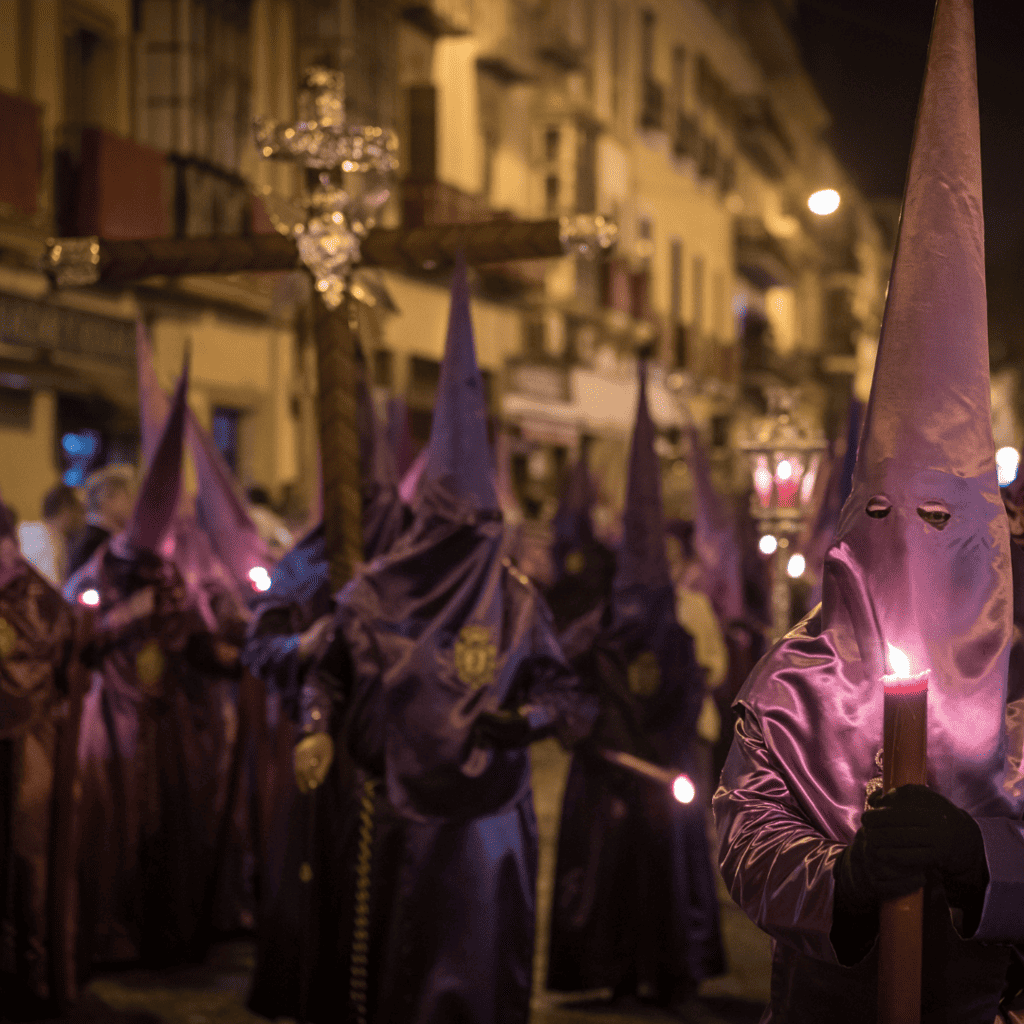
-
Save









